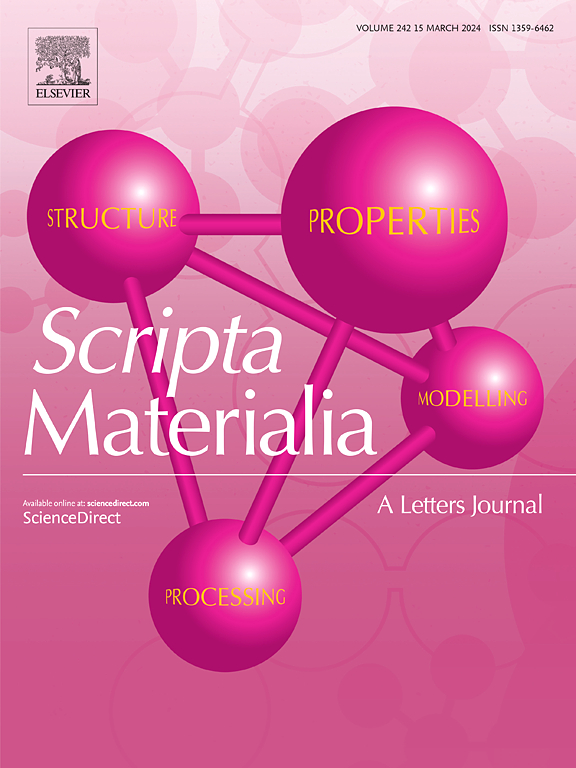磁场调节单金属Al和Zn熔体成核行为的原子结构基础
IF 5.3
2区 材料科学
Q2 MATERIALS SCIENCE, MULTIDISCIPLINARY
引用次数: 0
摘要
利用原位高能x射线衍射研究了液态锌(Zn)和铝(Al)在0.3/0.4 T静磁场作用下的原子尺度结构演变。我们的研究结果揭示了对磁场的不同响应:液态Zn的第一个配位壳膨胀,而Al的第一个配位壳收缩,表明磁场对这些金属中的原子聚集有不同的影响,这进一步影响了随后成核过程中的固液界面能(γ)。具体来说,磁场增加Zn中的γ,阻碍成核,而减少Al中的γ,从而促进成核。这种截然不同的行为源于两种金属的独特磁性及其对磁场的相应响应,与磁偶极子理论一致。通过阐明磁场影响成核的原子尺度机制,本研究为通过控制磁场的应用来定制凝固微观组织提供了基础。本文章由计算机程序翻译,如有差异,请以英文原文为准。

Atomic structural basis for magnetic field regulating nucleation behavior in monometallic Al and Zn melts
We investigated the atomic-scale structural evolution of liquid zinc (Zn) and aluminum (Al) under the influence of a 0.3/0.4 T static magnetic field using in situ high-energy X-ray diffraction. Our results reveal distinct responses to the magnetic field: the first coordination shell of liquid Zn expands, while that of Al contracts, indicating that the magnetic field differentially affects atomic aggregation in these metals, which further influences the solid-liquid interfacial energy (γ) during the subsequent nucleation process. Specifically, the magnetic field increases γ in Zn, hindering nucleation, while decreasing γ in Al, thereby promoting nucleation. This contrasting behavior arises from the distinct magnetic properties of the two metals and their corresponding responses to the magnetic field, consistent with the magnetic dipole theory. By elucidating the atomic-scale mechanisms through which magnetic fields influence nucleation, this study provides a foundation for tailoring solidification microstructures through the controlled application of magnetic fields.
求助全文
通过发布文献求助,成功后即可免费获取论文全文。
去求助
来源期刊

Scripta Materialia
工程技术-材料科学:综合
CiteScore
11.40
自引率
5.00%
发文量
581
审稿时长
34 days
期刊介绍:
Scripta Materialia is a LETTERS journal of Acta Materialia, providing a forum for the rapid publication of short communications on the relationship between the structure and the properties of inorganic materials. The emphasis is on originality rather than incremental research. Short reports on the development of materials with novel or substantially improved properties are also welcomed. Emphasis is on either the functional or mechanical behavior of metals, ceramics and semiconductors at all length scales.
 求助内容:
求助内容: 应助结果提醒方式:
应助结果提醒方式:


